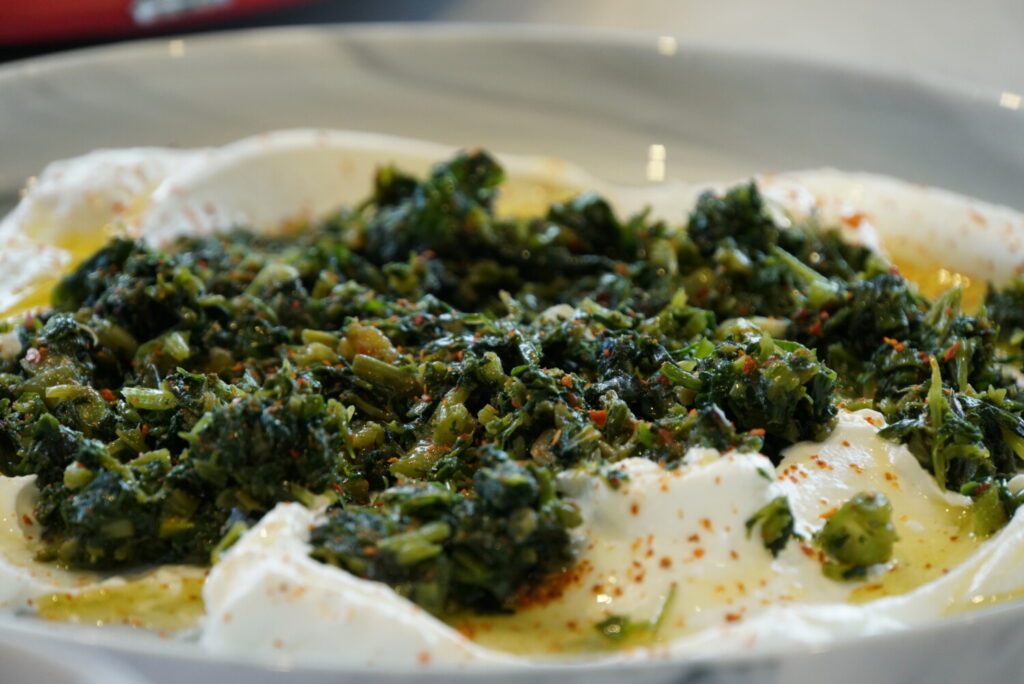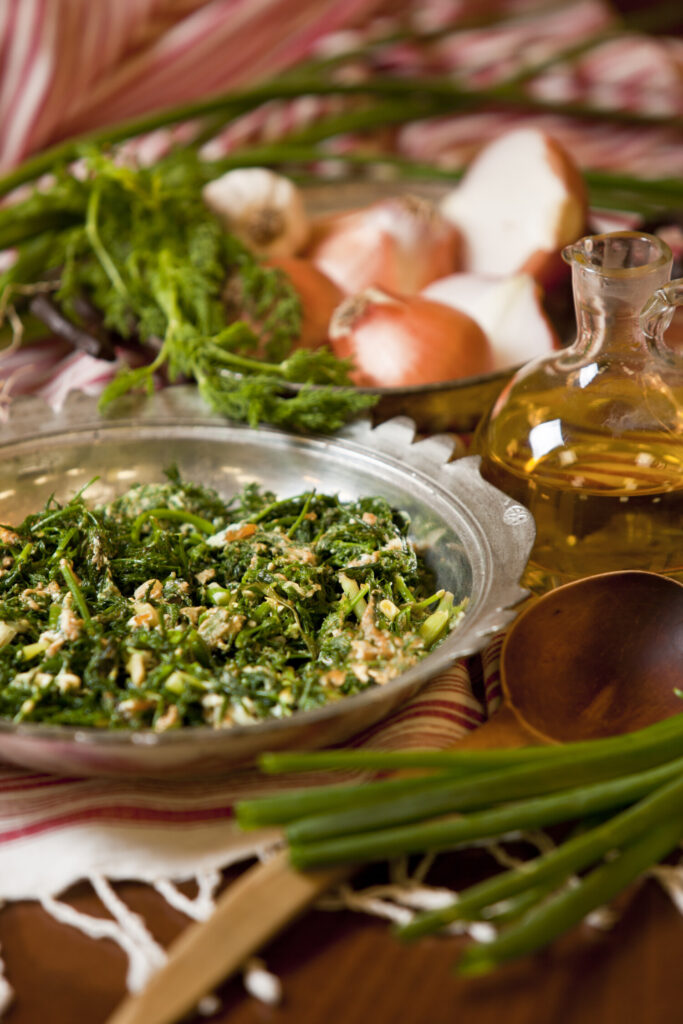- Turkaegean, Türkiye’s coast of happiness, welcomes guests with its serene landscape and ambience, delicious olive oil, rich winemaking heritage, and renowned culinary culture of fresh vegetables. The most popular flavours of this cuisine are served to tables in distinctive recipes made with herbs from Turkaegean’sfertile lands.
These delightful herbs attract attention as a unique source of healing due to their high concentrations of vitamins and minerals. Because of these traits, this region may host the world’s only herb festival. Prepare for your TurkAegean adventure, where you will enjoy delicious herbal foods and find health!
Medicinal Herbs: From Nature to Table
Green Sorrel, “Cibes” Grass, Blessed Thistle, Samphire, Fennel, Pumpkin Flower, Dandelion, Nettle,and Mallow… These herbs, many of which are noted for their unusual names, are among the most popular along the coasts of the Aegean.
o Green Sorrel (Kuzu Kulağı) is known as ‘lamb’s ear’ in Turkish because it looks like a lamb’s ear. With its sour flavour, this therapeutic herb is commonly used in salads, soups, and pastries. It can also be prepared with olive oil. Green sorrel, a pungent herb rich in vitamins A and C, as well as calcium, potassium, magnesium, and phosphorus, is thought to heal numerous diseases by strengthening the body.
o “Cibes” Grass (Cibes otu) is one of the region’s most popular herbs that grow from the roots left in the soil after cutting and collecting cabbage and cauliflower. Cibes grass, often cooked and served with olive oil and lemon, is a must-have on any fish table. Cibes grass, which is also a good vitamin C source, helps keep the digestive system running smoothly.
o Blessed Thistle (Şevket-i Bostan) is high in vitamins and minerals and has a fleshy white structure, leaves, and thorns. This herb, which can also be fried in olive oil, is traditionally served with lamb meat and a special seasoning. The herb’s name is supposed to be derived from the Arabic word ‘şevket,’ which means «thorn.» The herb’s name refers to the ‘thorn of the orchard’ in Turkish.
 The Samphire (Deniz Börülcesi), which grows in abundance in the Aegean Sea, leaves a salty and sour taste in the mouth. Samphire, which got its name because it was grown in seawater, is served as a salad on Aegean tables. The herb is both well-cooked and kept fresh by being placed in cold water immediately after being boiled in hot water.Samphire is typically served with olive oil, garlic, and lemon.
The Samphire (Deniz Börülcesi), which grows in abundance in the Aegean Sea, leaves a salty and sour taste in the mouth. Samphire, which got its name because it was grown in seawater, is served as a salad on Aegean tables. The herb is both well-cooked and kept fresh by being placed in cold water immediately after being boiled in hot water.Samphire is typically served with olive oil, garlic, and lemon. Fennel (Arapsaçı) has a solid anise-like aroma and is believed to be named ‘tangle’ in Turkish due to its bushy and rasta-like look. Fennel, which the Romans used extensively, is an essential component of mixed herb roasts and lamb dishes. Fennel is commonly eaten as a salad with lemon and olive oil but can also be cooked with eggs. Fennel leaves, recognised for their cough-suppressing feature, can also be dried and made as tea.
Fennel (Arapsaçı) has a solid anise-like aroma and is believed to be named ‘tangle’ in Turkish due to its bushy and rasta-like look. Fennel, which the Romans used extensively, is an essential component of mixed herb roasts and lamb dishes. Fennel is commonly eaten as a salad with lemon and olive oil but can also be cooked with eggs. Fennel leaves, recognised for their cough-suppressing feature, can also be dried and made as tea.The Stuffed Pumpkin Flower (Kabak ÇiçeğiDolması) is one of the most distinctive foods found in Turkaegean. The pumpkin flowers that give the dish its name is harvested early in the morning when they are completely open and not faded by the sun’s heat. They are cleaned before being stuffed and placed on tables. Orange-yellow pumpkin flowers are rich in vitamins A, C, and B.
Dandelion (Radika), essential for rakı & fish tables, draws attention with its jagged leaves. Dandelion contains high levels of vitamins A and C, iron, calcium, and potassium and has been utilised as a panacea by healers since ancient times. Dandelion is traditionally prepared by boiling the leaves and serving them with lemon and olive oil. Dandelion can also be served boiled and mixed with yoghurt. Dandelion leaves can be dried and used to make herbal tea.
o Nettle (Isırgan Otu) is one of the most commonly consumed herbs in the Aegean, with its multiple medicinal benefits. This herb is known as ‘stinging nettle’ in Turkish because it causes skin irritation, itching, and a burning sensation when touched. It is also known that the Roman soldiers rubbed nettle leaves on their bodies and were less affected by cold weather conditions. Nettle is often preferred to be consumed in pastries and soups.
o Mallow (Ebegümeci) is a typical spring herb that grows naturally in the Aegean Region. This beneficial plant, consumed since ancient Greek and Roman times, is eaten by roasting. Mallow, high in vitamin C and antioxidants, is also used to cure colds as a tea.



